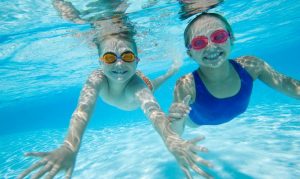 As the New Year approaches, most everyone will claim they are going to commit to their resolution to improve their health: after all, it is among the most commonly—and uniformly—made resolutions every year. Of course, everyone starts with the best of intentions but most will fail to follow through.
As the New Year approaches, most everyone will claim they are going to commit to their resolution to improve their health: after all, it is among the most commonly—and uniformly—made resolutions every year. Of course, everyone starts with the best of intentions but most will fail to follow through.
But it is not easy to commit to better health. You have to make a lot of changes and none of them are really all that much fun; and they aren’t guaranteed to help, either. Most of all, the diverse number of ways you can exercise can seem daunting; and how do you find the time?
Well, a good strategy would be to find the exercises with the fastest, most comprehensive results. And the good news is that a study out of Oxford University has yielded a definitive answer: racquet sports and swimming (the most aerobic sports).
Thus, Oja and his colleagues sought the benefits of specific physical activity. They tested exercise intensity, vigor, passivity, long- and short-term effects, and more. The study followed more than 80,000 people from Scotland and England over nine years (1994 to 2003); slightly more than half were female. To begin, the participants took a survey that assessed their physical activity habits, lifestyle, and medical history. At that time, only 45 percent met the physical activity guidelines set by the WHO (150 minutes of mod-intense aerobic physical activity a week for adults between 18 and 65).
Next, everyone was asked about their routines. The list included cycling, racquet sports, running, soccer, swimming, and aerobics. Assessing the most popular sports (which differed by gender, of course), the researchers found that swimming was the most effective, followed by racquet sports (tennis, squash, racquetball, badminton) and aerobics.
Oja comments, “Every one of these sports showed a significant association with (decreasing) mortality.”
The most popular sport, swimming, was also found, unsurprisingly, to be the most effective. Those who participated saw a 41 percent lower risk of death by heart disease and an overall risk reduction of 28 percent.
